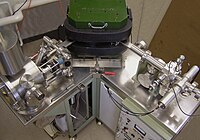
Photo from wikipedia
To better comprehend the dietary practices of past populations in the Eastern Baltic region we have created temporally and geographically restricted baselines for the time period of 200–1800 CE. In… Click to show full abstract
To better comprehend the dietary practices of past populations in the Eastern Baltic region we have created temporally and geographically restricted baselines for the time period of 200–1800 CE. In this multi-isotopic analysis, we report new δ13C, δ15N and δ34S values for 251 faunal bone collagen samples from various archaeological contexts in Estonia representing the most comprehensive set of Iron Age, Medieval and Early Modern Period faunal stable isotope values to date. The results map out the local carbon and nitrogen baselines and define isotopic ranges of local terrestrial, avian and aquatic fauna. We also demonstrate the potential application of sulfur stable isotope analysis in archaeological research. The results demonstrate a clear distinction between δ13C and δ34S values of marine and terrestrial species, however, freshwater fish display notable overlaps with both marine and terrestrial ranges for both δ13C and δ34S values. Herbivores show variation in δ34S values when grouped by region, explained by differences in the local biotopes. This study is the first attempt to connect the Eastern Baltic isotopic baselines and provides more detailed temporal and geographical references to study the local ecologies and interpret the human data.
Journal Title: PLOS ONE
Year Published: 2022
Link to full text (if available)
Share on Social Media: Sign Up to like & get
recommendations!